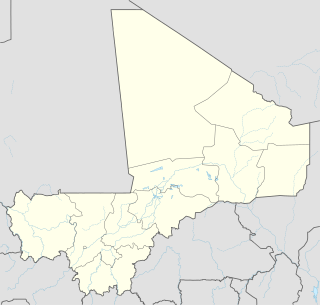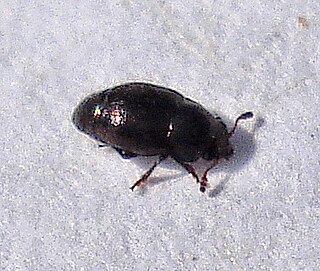
The honey badger, also known as the ratel, is a mammal widely distributed in Africa, Southwest Asia, and the Indian subcontinent. Because of its wide range and occurrence in a variety of habitats, it is listed as Least Concern on the IUCN Red List.

Stipa is a genus of around 300 large perennial hermaphroditic grasses collectively known as feather grass, needle grass, and spear grass. They are placed in the subfamily Pooideae and the tribe Stipeae, which also contains many species formerly assigned to Stipa, which have since been reclassified into new genera.

The rock hyrax, also called dassie, Cape hyrax,rock rabbit, and coney, is a medium-sized terrestrial mammal native to Africa and the Middle East. Commonly referred to in South Africa as the dassie, it is one of the five living species of the order Hyracoidea, and the only one in the genus Procavia. Rock hyraxes weigh between 4 kilograms (9 lb) and 5 kilograms (11 lb), and have short ears and tail.

The Cape hare, also called the desert hare, is a hare native to Africa and Arabia extending into India.

Olea capensis, also known by the common name black ironwood, is an African tree species belonging to the Olive family (Oleaceae). It is widespread in Sub-Saharan Africa from the east in Somalia, Ethiopia and Sudan, south to the tip of South Africa, and west to Cameroon, Sierra Leone and the Islands of the Gulf of Guinea, as well as Madagascar and the Comoros. It occurs in bush, littoral scrub and evergreen forest.

The false jacopever or Cape redfish is a marine fish belonging to the family Sebastidae. Found only in waters off the western coast of South Africa, Tristan da Cunha and southern South America, S. capensis lives in depths of 20 to 275 metres. It reaches up to 37 centimetres (15 in) in length, and is reddish or brownish with 5–6 pale spots on the upper part of the body. It has extremely prominent eyes. It mainly feeds on mysids.

The lesser jacana is a species of bird in the family Jacanidae. It is monotypic within the genus Microparra.

An anchovy is a small, common forage fish of the family Engraulidae. Most species are found in marine waters, but several will enter brackish water, and some in South America are restricted to fresh water.

The sargo or white seabream is a species of seabream native to the eastern Atlantic and western Indian Oceans. It is found from the Bay of Biscay southwards to South Africa, including Madeira and the Canary Islands, the Mediterranean and (rarely) the Black Sea. Occasionally individuals are found off the Indian Ocean coasts of South Africa, Mozambique and Madagascar, and they are very rarely found elsewhere in the Indian Ocean, such as off Oman. An active fish, they inhabit the surf zone, but they may be found down to 50 m.

Flabellobasis capensis is a species of snout moth in the genus Flabellobasis. It is found in South Africa, Ghana, Kenya, Namibia, Réunion and Zimbabwe but has also been recorded from Spain.

The Cape horse mackerel is a mackerel-like species in the family Carangidae. It is a pelagic species of the south eastern Atlantic Ocean which is a target of fisheries, mainly as bycatch.

Horokoto is a village and principal settlement (chef-lieu) of the commune of Niambia in the Cercle of Bafoulabé in the Kayes Region of south-western Mali.

The onefin electric ray or Cape numbfish is a common but little-known species of electric ray in the family Narkidae, native to South Africa and Namibia. It is a benthic fish found in shallow coastal bays over sandy or muddy bottoms. This small species reaches 38 cm (15 in) in length, and has a nearly circular pectoral fin disc and a short, muscular tail that supports a large caudal fin. It can be identified by its single dorsal fin, which is located over the large pelvic fins. Its dorsal coloration is yellowish to dusky brown.

Halacritus is a genus of clown beetles in the family Histeridae. There are more than 20 described species in Halacritus.

Brachypterus is a genus of short-winged flower beetles in the family Kateretidae. There are about 18 described species in Brachypterus.
Elipsocus is a genus of damp barklice in the family Elipsocidae. There are more than 20 described species in Elipsocus.

Limnogonus is a genus of water striders in the family Gerridae. There are more than 20 described species in Limnogonus.

Invertebrate iridescent virus 31 (IIV-31), also known informally as isopod iridovirus, is a species of invertebrate iridovirus in the genus Iridovirus. Oniscidea serve as hosts. Infection is associated with decreased responsiveness in the host, increased mortality, and most strikingly, the emergence of an iridescent blue or bluish-purple colour due to the reflection of light off a paracrystalline arrangement of virions within the tissues.
















